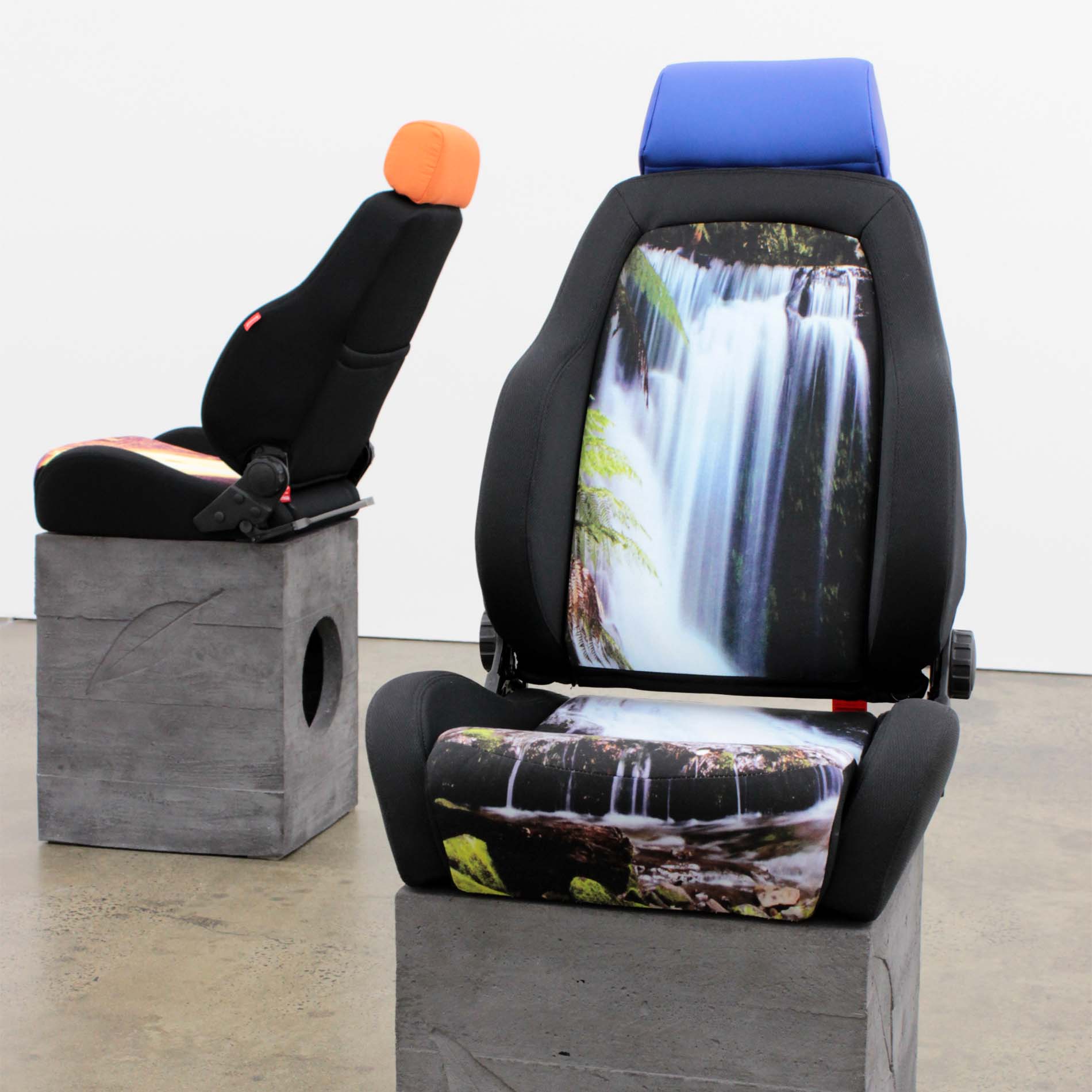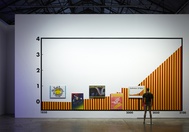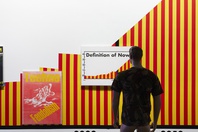Janet Burchill & Jennifer McCamley
Wurundjeri/Boon Wurrung Country, Narrm (Melbourne) and Barkandji/Latji Latji Country, Buronga, New South Wales
2021
Displayed 2021 at Carriageworks

Janet Burchill & Jennifer McCamley
Janet Burchill
Born 1955, Wurundjeri/Boon Wurrung Country, Narrm (Melbourne). Lives and works on Wurundjeri/Boon Wurrung Country, Narrm (Melbourne) and Barkandji/Latji Latji Country, Buronga, New South Wales
Jennifer McCamley
Born 1957, Jagera/Turrbal Country, Meanjin (Brisbane). Lives and works on Wurundjeri/Boon Wurrung Country, Narrm (Melbourne) and Barkandji/Latji Latji Country, Buronga, New South Wales
Janet Burchill and Jennifer McCamley have been working together since 1985. Their practice engages with the legacies of modernism and traverses a wide range of references from psychoanalysis to film, minimal and conceptual art, literature, feminism, and political and artistic manifestos. Their work frequently incorporates text and citation including that of Gertrude Stein, Emily Dickinson, Valerie Solanas and Simone Weil among others. Moving between the boundaries of art, architecture and design their work often takes the form of sculpture and furniture.
Artist text
by Abigail Moncrieff
Janet Burchill and Jennifer McCamley have been collaborating since the mid-1980s. Part of a dynamic and exciting Sydney art scene at this time, the artists drew inspiration from the rise of postmodernism, bringing together their interests in feminism, film, semiotics and the legacies of modernism and conceptual art. They first began working together on Super-8 films, often colliding different frames of reference. Their 1984 film, Bathgirls ‘84, for example, brings together the laconic popism of Andy Warhol’s Tub Girls (1967) with the pyscho-social intensity of Jean Genet’s most famous play The Maids (1947).
The artists’ highly condensed and visually compelling works often involve combinations of text and carefully chosen materials, resulting in objects and spatial installations that are finely tuned and richly suggestive. Burchill and McCamley’s work for The National 2021, The Definition of Now, uses a conceptual and abstracted rendering of a climate change graph that the artists have used since 2015 in floor and wall works, accompanied by a selection of changing objects (rocks, fruit, old computers). This graphic representation of global warming has now been customised to the voluminous scale of Carriageworks, with a T-shirt-clad mannequin leading the viewer into the space of the graph’s pictorial staging.
Initially published by the Max Planck Institute in 2006 as ‘MPI A2 Scenario Run 5’, the graph models the rise of global temperature over time. The timeline begins in 1850 at the start of the Industrial Revolution and extractive capitalism, continues through to the present and then hypothetically forward to 2100. In sum, this graph charts the long-term, human-induced heating of Earth’s climate system. Presented in high key colour, composed of red, yellow and black tape, this over-scaled graph is strangely tactile and presents an overwhelming temporality; while it is beautiful to look at, the speed with which temperature has been climbing since the baseline of 1850 indicates not only a troubling present but a devastating envisaged future for the Earth.
A new series of five prints has been placed within the space of this large graph. The artists’ fascination with the pictorial language of data visualisation graphics, with their abstract qualities and staccato mode of communication, is evident in these prints. One print employs a term popularised by Greek economist Yanis Varoufakis, ‘techno feudalism’, to characterise current economic and political conditions. According to Varoufakis, techno feudalism combines the worst of the state with the worst of private monopolies, resulting in staggering inequality. The artists use this term in an allusive manner, to conjure a general feeling about now. The astute usage of citation and text is a hallmark of Burchill and McCamley’s work, which in the past has referenced the modernist writing of Gertrude Stein and the polemical writing of the radical feminist Valerie Solanas (S.C.U.M Manifesto), among others. Another print uses an excerpt from a poem by 19th-century American poet Emily Dickinson, whose poetry the artists have worked with in a number of earlier paintings. This prescient citation introduces a different time scale and a sense of cosmic overturning into the print series.
Looking back and then forward, Definition of Now speaks to a world that is off-track, and listening to the wrong narratives. The work employs multiple cultural and symbolic citations that speak to a contemporary narrative of crisis around climate change. Burchill and McCamley have built an influential practice that we have been fortunate to experience over time: salient, precise and evocative, their work remains current and of our moment.
Artists' acknowledgements
Janet Burchill & Jennifer McCamley are represented by Neon Parc, Melbourne.
The artists thank Trent Walter from Negative Press, Melbourne, Geoff Newton from Neon Parc, Melbourne and Abigail Moncrieff from Carriageworks for their assistance with this exhibition.

